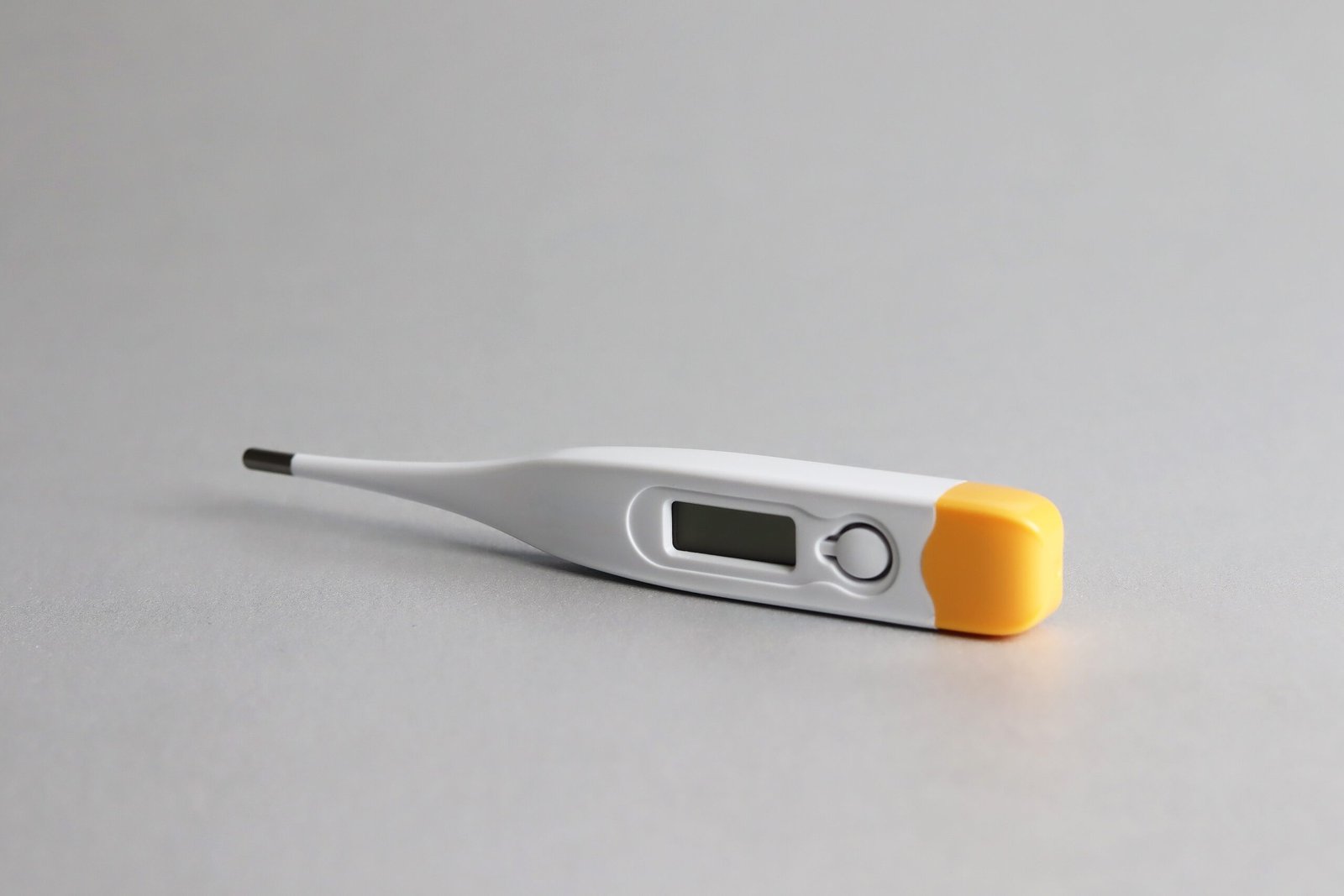Imagine having the convenience of wireless video monitors for enhanced surveillance and security, but with the added advantage of integrating them with other types of sensors like temperature or humidity. This ingenious concept allows you to not only keep an eye on your surroundings but also monitor the environmental conditions in real-time. With wireless technology becoming more prevalent in our daily lives, the possibility of combining it with sensor technology opens up exciting new opportunities for a smarter and more connected future.
Introduction
Overview of wireless video monitors
Wireless video monitors are a cutting-edge technology that allows for remote monitoring and surveillance through wireless transmission of video feeds. These monitors have revolutionized the security and monitoring industry by providing a flexible and convenient solution for video surveillance in various environments. By eliminating the need for wired connections, wireless video monitors offer increased mobility and flexibility, making them ideal for both indoor and outdoor applications.
The importance of integrating sensors with video monitors
While wireless video monitors alone are already powerful tools for monitoring and surveillance, their capabilities can be significantly enhanced by integrating sensors into the system. Sensors help to gather additional data and provide valuable insights to improve security and monitoring capabilities. By integrating sensors with wireless video monitors, users can achieve real-time data collection and analysis, improved efficiency, faster response times, and a more comprehensive monitoring solution overall.
Benefits of Integrating Sensors with Wireless Video Monitors
Enhanced security and monitoring capabilities
Integrating sensors with wireless video monitors greatly enhances the security and monitoring capabilities of the system. Sensors such as motion sensors can detect any movement within the monitored area, triggering the video feed to start recording and alerting the user of any suspicious activity. This integration allows for proactive monitoring, ensuring that any potential security threats are promptly detected and addressed. Additionally, the integration of sensors like smoke and gas sensors enables the system to detect fires or gas leaks, providing early warnings and mitigating potential disasters.
Real-time data collection and analysis
By integrating sensors with wireless video monitors, real-time data collection and analysis become possible. For example, temperature sensors can collect data on the ambient temperature within the monitored area, while humidity sensors can measure the moisture levels. This data can be used to monitor environmental conditions and provide insights into potential issues such as equipment overheating or moisture damage. Real-time data analysis allows for proactive decision-making and preventive actions based on the collected data, enhancing overall efficiency and reducing downtime.
Improved efficiency and response times
Integrating sensors with wireless video monitors leads to improved efficiency and faster response times. Instead of relying solely on video feeds, sensors complement the monitoring system by providing additional data points. For instance, integrating light sensors allows the system to automatically adjust the camera’s exposure settings based on the ambient light conditions, ensuring clear and accurate footage at all times. This automation reduces the need for manual adjustments, streamlining the monitoring process and enabling quick responses to changes in lighting conditions.

This image is property of images.unsplash.com.
Types of Sensors that Can be Integrated
Temperature sensors
Temperature sensors measure the ambient temperature of the monitored area. By integrating temperature sensors with wireless video monitors, users can monitor temperature fluctuations and detect any abnormal changes. This integration is particularly beneficial in environments that require strict temperature control, such as server rooms or medical storage facilities.
Humidity sensors
Humidity sensors measure the moisture levels in the air. Integrating humidity sensors with wireless video monitors allows for real-time monitoring of humidity levels, ensuring that the environment remains within the desired humidity range. This integration is crucial in environments where moisture can cause damage, such as museums, laboratories, or warehouses storing sensitive materials.
Motion sensors
Motion sensors detect movement within the monitored area. By integrating motion sensors with wireless video monitors, users can receive alerts and trigger video recording whenever motion is detected. This integration is vital for security purposes as it allows for proactive monitoring and immediate response to any potential security breaches.
Smoke and gas sensors
Smoke and gas sensors detect the presence of smoke or harmful gases in the environment. By integrating these sensors with wireless video monitors, users can receive early warnings in the event of a fire or gas leak. This integration enhances the safety and security of the monitored area by allowing for prompt evacuation and emergency response.
Light sensors
Light sensors measure the amount of ambient light present. By integrating light sensors with wireless video monitors, users can ensure that the camera settings automatically adjust to the surrounding lighting conditions. This integration guarantees optimal image quality, whether in low-light or bright environments, resulting in clear and accurate video footage.
How Wireless Video Monitors Work
Wireless transmission protocols used
Wireless video monitors utilize various wireless transmission protocols to transmit video feeds to the monitoring device. Common protocols include Wi-Fi, Bluetooth, and cellular networks. Wi-Fi is commonly used for indoor applications, providing a reliable and high-speed connection. Bluetooth is suitable for short-range applications, such as connecting a wireless camera to a nearby device. Cellular networks offer the advantage of long-range coverage, making them ideal for outdoor monitoring in remote locations.
Integration of sensors into the video monitoring system
To integrate sensors with wireless video monitors, the sensors must be connected to the monitoring system or network. This can be achieved through wired or wireless connections, depending on the specific sensor and monitoring system requirements. Once the sensors are connected, they can send data to the video monitoring system, which can then be processed and analyzed in real-time. The integrated system enables users to access both video feeds and sensor data through a single interface, providing a comprehensive monitoring solution.

This image is property of images.unsplash.com.
Integration Challenges and Solutions
Compatibility issues between different sensor types
One challenge when integrating sensors with wireless video monitors is the compatibility between different sensor types. Different sensors may use different communication protocols or have varying data formats, making it difficult to integrate them into a cohesive system. However, advancements in technology have led to the development of standardized protocols and interfaces, allowing for easier integration of sensors from different manufacturers. Additionally, middleware and software solutions can bridge the gap between different sensor types, ensuring seamless communication and data exchange.
Synchronization and data processing challenges
Integrating sensors with wireless video monitors requires synchronization and processing of data from multiple sources in real-time. This can pose challenges in terms of data latency, accuracy, and system stability. To overcome these challenges, efficient data processing algorithms and high-speed processing capabilities are essential. Additionally, synchronization techniques such as timestamping can be implemented to ensure that the data collected from sensors and video feeds are aligned accurately, enabling meaningful analysis and interpretation.
Power supply and battery life considerations
Integrating sensors with wireless video monitors increases the power consumption of the overall system. This poses challenges in terms of power supply and battery life, especially for wireless devices that require batteries for operation. To address these challenges, power-efficient sensor designs, as well as energy-saving measures, can be implemented. For example, sensors can be designed to enter a low-power standby mode when not in use or utilize energy harvesting techniques to prolong battery life. Additionally, the use of power management systems and renewable energy sources can help ensure a stable and reliable power supply for the integrated system.
Wireless communication range limitations
Wireless communication range limitations can be a challenge when integrating sensors with wireless video monitors, especially in large or outdoor environments. The range of wireless communication may be limited by factors such as physical obstructions, signal interference, or the capabilities of the wireless transmission protocols used. To overcome these limitations, technologies such as mesh networking or signal repeaters can be employed to extend the wireless communication range. Additionally, the use of higher-powered wireless transmitters or the placement of antennas in strategic locations can improve the signal strength and coverage.
Applications of Integrated Wireless Video Monitoring Systems
Home security and surveillance
Integrated wireless video monitoring systems are widely used in home security and surveillance applications. By integrating sensors like motion sensors and smoke detectors, homeowners can have a comprehensive and reliable security solution. These systems allow users to remotely monitor their homes, receive real-time alerts in case of intrusions or emergencies, and have visual evidence in the event of a security incident.
Industrial monitoring and control
In industrial environments, integrated wireless video monitoring systems play a vital role in ensuring safety, security, and efficiency. By integrating sensors like temperature and humidity sensors, these systems enable real-time monitoring of environmental conditions, machinery performance, and process control. This integration allows for early detection of equipment malfunctions, prevention of accidents, and optimization of industrial processes.
Environmental monitoring
Wireless video monitors integrated with sensors have great potential in environmental monitoring applications. By integrating sensors like temperature, humidity, and light sensors, these systems can monitor conditions in natural environments, agriculture, or indoor spaces. This integration enables environmental scientists, farmers, and building managers to gain insights into environmental parameters, optimize resource allocation, and promote sustainable practices.
Building automation
Integrated wireless video monitoring systems contribute to building automation by providing a comprehensive solution for security, energy management, and environmental control. By integrating sensors like temperature, humidity, light, and motion sensors, these systems can automatically adjust heating, cooling, and lighting settings based on real-time data and user preferences. This integration enhances energy efficiency, occupant comfort, and overall building management.

This image is property of images.unsplash.com.
Use Cases and Success Stories
Smart home monitoring with temperature and humidity sensors
In a smart home setup, wireless video monitors can be integrated with temperature and humidity sensors to create a comprehensive home monitoring and automation system. For example, if the temperature or humidity levels exceed preset thresholds, the system can automatically adjust the thermostat or activate a humidifier. This integration ensures optimal indoor conditions, energy efficiency, and peace of mind for homeowners.
Efficient energy management using integrated video and light sensors
Wireless video monitors integrated with light sensors can be used to optimize energy management in commercial buildings. By analyzing the ambient light levels and occupancy patterns, the system can automatically adjust the lighting levels, reducing energy consumption. This integration improves energy efficiency, reduces operational costs, and provides a comfortable environment for building occupants.
Fire prevention through the integration of smoke and gas sensors
Integrating wireless video monitors with smoke and gas sensors is critical for fire prevention and safety. By constantly monitoring the environment for the presence of smoke or hazardous gases, the system can trigger alarms, alert occupants, and provide visual confirmation through the video feeds. This integration enhances the early detection of fire hazards, minimizing the risk of injuries or property damage.
Future Developments and Trends
Advancements in sensor technology
The field of sensor technology is continuously evolving, leading to the development of more advanced and accurate sensors. Future advancements may include sensors with higher resolution, improved sensitivity, and enhanced communication capabilities. These advancements will enable more precise and reliable data collection, expanding the possibilities for integrating sensors with wireless video monitors.
Artificial intelligence and machine learning integration
The integration of artificial intelligence (AI) and machine learning (ML) algorithms with wireless video monitors and sensor data is expected to revolutionize the field. AI-powered systems can analyze the video feeds and sensor data in real-time, automatically identifying patterns, anomalies, and potential threats. This integration will enable more intelligent and proactive monitoring systems, enhancing security and efficiency.
Wireless video monitors in Internet of Things (IoT) ecosystems
Wireless video monitors are a crucial component in the Internet of Things (IoT) ecosystems. As the IoT continues to grow, more devices and sensors will become connected and integrated. Wireless video monitors will play a significant role in collecting and analyzing data from these devices, providing valuable insights for various applications such as smart cities, transportation, and healthcare.
Conclusion
In conclusion, the integration of sensors with wireless video monitors offers numerous benefits and advantages across various industries and applications. By integrating sensors such as temperature, humidity, motion, smoke, gas, and light sensors, wireless video monitoring systems become more powerful and versatile. Enhanced security and monitoring capabilities, real-time data collection and analysis, improved efficiency and response times, and expanded functionality are just some of the benefits of this integration. From home security to industrial monitoring and environmental control, the possibilities for integrating sensors with wireless video monitors are vast. As technology continues to advance and new developments emerge, the potential for innovation and expansion in this field is exciting. With continued research and development, integrated wireless video monitoring systems will continue to improve, enabling safer, more efficient, and more connected environments.

Meet Penny Sterling, the editor behind the captivating content of our blog, “Wireless Video Monitor.” With a background in electrical engineering and a deep passion for technology, Penny has become a leading authority in the world of wireless video monitors. Her ability to distill complex concepts into accessible articles has made her a trusted guide for both tech enthusiasts and newcomers to the field. Penny’s unwavering commitment to research and staying up-to-date ensures that “Wireless Video Monitor” remains an authoritative source for reliable information. Get ready to embark on a journey of wireless video monitor exploration with Penny Sterling as your knowledgeable and dedicated mentor.


